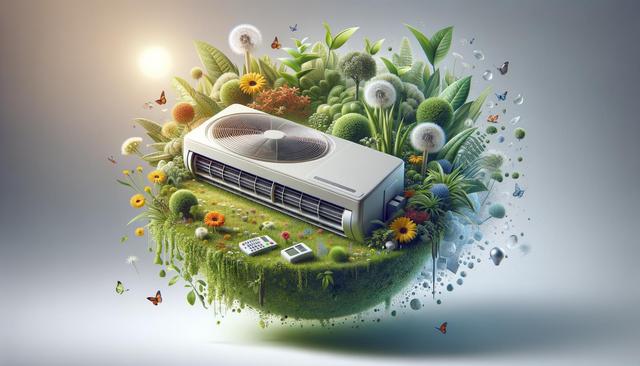The Growing Demand for Cooling Solutions
With climate change intensifying heatwaves across the globe, the demand for air conditioning systems is on a steady rise. More households and businesses are installing cooling systems to maintain comfort and safety during extreme weather. However, this surge in usage has a direct impact on energy consumption and environmental sustainability. In response, the market is shifting towards energy-efficient cooling solutions that aim to reduce electricity usage without compromising performance.
Modern air conditioners are now designed to meet stricter energy efficiency standards. Features such as variable-speed compressors and smart thermostats contribute significantly to conserving energy. Additionally, many governments and environmental organizations offer incentives for upgrading to higher-efficiency models, which encourages broader adoption.
To meet future demands while minimizing environmental impact, manufacturers and consumers alike are embracing new technologies that prioritize both functionality and sustainability.
Environmental Concerns and Refrigerant Issues
One of the biggest challenges linked to air conditioning is its contribution to greenhouse gas emissions, particularly through refrigerants. Traditional cooling systems often use hydrofluorocarbons (HFCs), which are potent greenhouse gases. When these systems develop refrigerant leaks and climate impact becomes a real concern due to the release of these harmful chemicals into the atmosphere.
To address this issue, there’s a growing shift toward natural refrigerants and lower-GWP (Global Warming Potential) alternatives. These substances are less damaging to the environment and are becoming more common in newer models. Some widely used alternatives include:
- Hydrocarbons (such as propane and isobutane)
- Carbon dioxide (CO2-based systems)
- Ammonia in industrial applications
Regular maintenance is also critical. Preventing and detecting refrigerant leaks not only extends the unit’s lifespan but also mitigates environmental impact. As awareness grows, both consumers and service providers are becoming more proactive in ensuring their systems are environmentally safe.
Eco-Friendly Innovations in 2025
The year 2025 is shaping up to be a turning point for the HVAC industry with a strong emphasis on sustainability. A new wave of eco-friendly air conditioners 2025 is emerging, designed to meet both environmental regulations and consumer expectations. These units feature advancements such as solar-powered operations, recyclable components, and smart integration that optimizes energy use based on real-time data.
Some notable trends in 2025 include:
- Integration of AI to adjust cooling based on occupancy and weather forecasts
- Use of biodegradable materials in unit construction
- Enhanced insulation to reduce cooling demand
These innovations not only reduce the carbon footprint of cooling systems but also offer long-term cost savings to users through lower energy bills. As more people prioritize eco-conscious living, demand for such technologies is expected to grow steadily.
Choosing the Right Energy-Efficient System
When selecting an air conditioning system, it’s essential to consider more than just the initial cost. Opting for energy-efficient cooling solutions can lead to significant savings over time while also supporting environmental goals. Factors to consider include the energy rating of the unit, size relative to the space, and the type of refrigerant used.
Consumers should look for labels such as Energy Star ratings or local equivalents that indicate a system’s efficiency. Additionally, it’s wise to consult professionals who can assess your space and recommend the most suitable options. Key considerations include:
- SEER (Seasonal Energy Efficiency Ratio) ratings
- Compatibility with smart home systems
- Noise levels and maintenance requirements
By making informed choices, homeowners and businesses can enjoy reliable cooling while minimizing their environmental footprint.
The Role of Policy and Public Awareness
Government policies and public education play a crucial role in promoting sustainable air conditioning practices. Regulations regarding refrigerants, energy efficiency standards, and incentives for green upgrades are shaping the future of the industry. These measures support the broader goal of reducing emissions and ensuring that cooling technologies align with climate goals.
Public campaigns and educational materials are also helping consumers understand the impact of their choices. Initiatives that highlight the risks of refrigerant leaks and climate impact or promote the adoption of eco-friendly air conditioners 2025 contribute to more informed decision-making.
In the long run, collaboration among manufacturers, policymakers, and consumers is necessary to make a meaningful difference. Together, we can create a market that values sustainability as much as comfort and convenience.
Conclusion: Embracing a Cooler, Greener Future
As the effects of climate change become more pronounced, investing in energy-efficient cooling solutions and supporting eco-friendly air conditioners 2025 are steps in the right direction. By being conscious of refrigerant leaks and climate impact, making informed purchases, and supporting responsible policies, individuals and organizations can contribute to a more sustainable future. The path forward involves balancing modern needs with long-term environmental stewardship—and that starts with smarter cooling choices today.




Leave a Reply